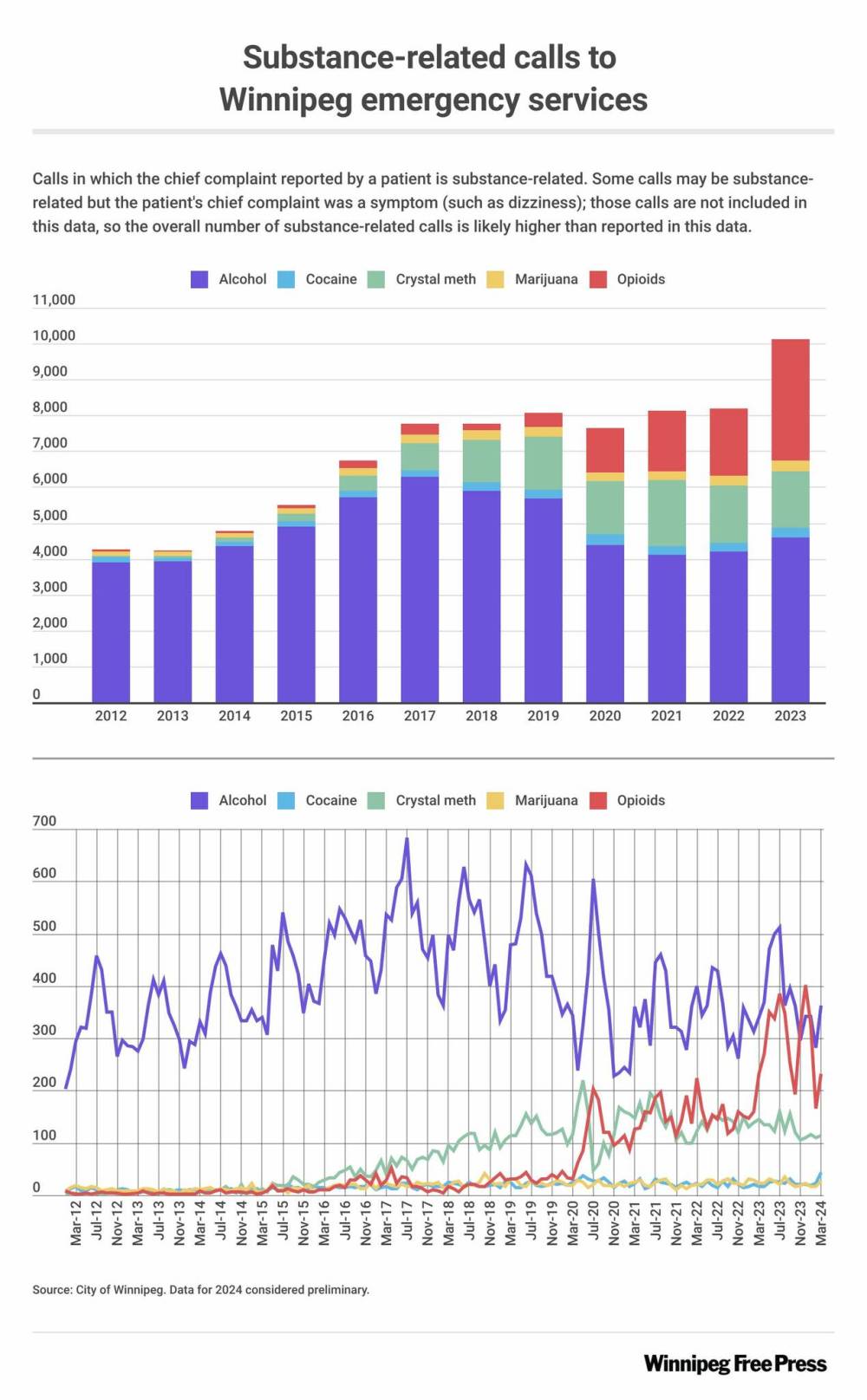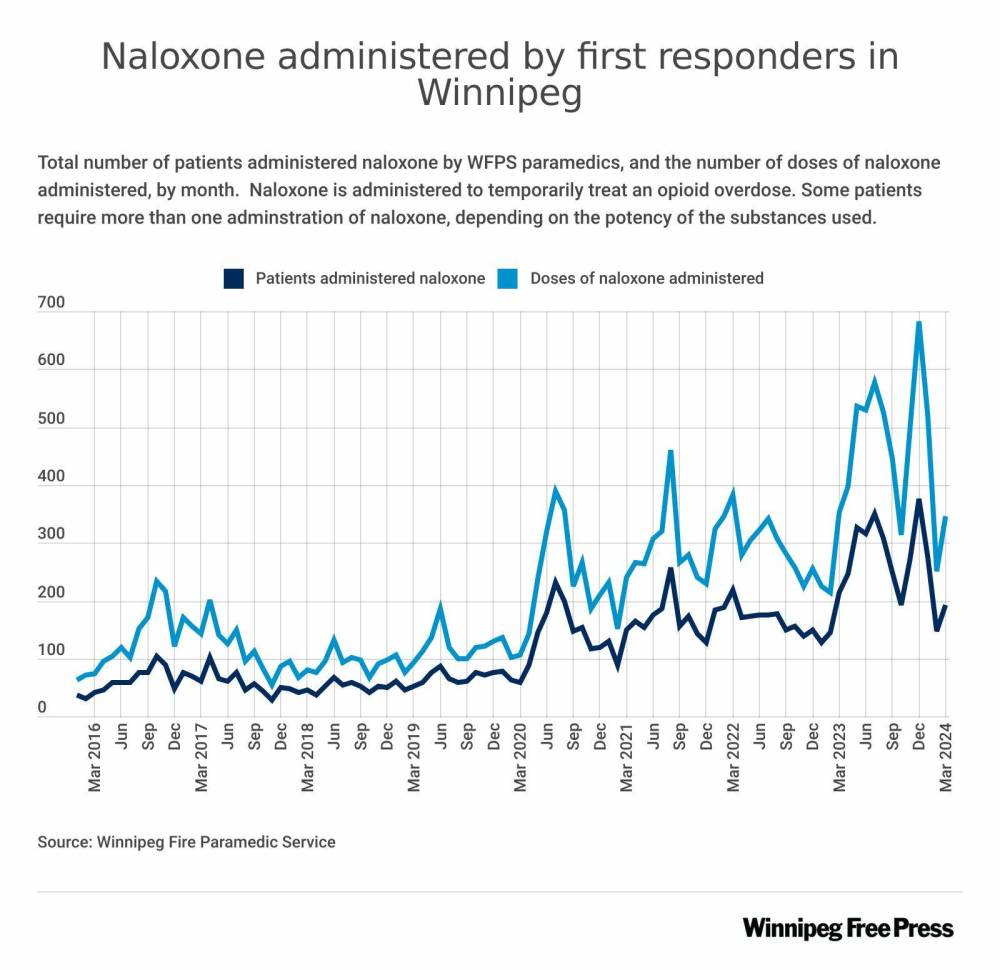Dollars and deliberation on road to harm reduction Advocates buoyed after NDP makes $2M budget commitment for supervised drug consumption site, but facility at least a year away as opioid crisis rages on
Read this article for free:
or
Already have an account? Log in here »
To continue reading, please subscribe:
Monthly Digital Subscription
$19 $0 for the first 4 weeks*
- Enjoy unlimited reading on winnipegfreepress.com
- Read the E-Edition, our digital replica newspaper
- Access News Break, our award-winning app
- Play interactive puzzles
*No charge for 4 weeks then billed as $19 every four weeks (new subscribers and qualified returning subscribers only). Cancel anytime.
Read unlimited articles for free today:
or
Already have an account? Log in here »
The people at Prairie Harm Reduction anticipated pushback before their organization opened Saskatchewan’s first and only supervised consumption site in 2020.
So they headed it off. They got police, fire and the City of Saskatoon on board, they knocked on every door in the surrounding neighbourhood and then they opened the doors for public tours.
The facility and others like it in B.C., Alberta, Ontario and Quebec, provide safe, clean spaces for people to use their own illegal substances in the presence of trained staff, preventing accidental overdoses and reducing the spread of infectious diseases.
“We had lots of people coming in ready to fight,” says Kayla DeMong, Prairie Harm Reduction’s executive director. “By the time they left, they were handing us cheques.
“Once they really got to see what it was and what was going to be happening, they became a lot more supportive.”
Manitoba is now at a similar turning point.
The Wab Kinew-led NDP campaigned during last summer’s election campaign on a promise to open the province’s first supervised consumption site.
And Kinew’s government committed $2 million in its first budget last week to establish a facility. But the province says it needs a year to consult community stakeholders on the location and the services that should be offered.
Bernadette Smith, Manitoba’s housing, addictions and homelessness minister, said the NDP began consultations with those on the front lines immediately after winning the Oct. 3 election.
Kinew instructed her to get the promised facility off the ground in her ministerial mandate letter, she says in an interview with the Free Press earlier this week.
“Job 1 was to get out and start this work.”
MIKAELA MACKENZIE / FREE PRESS FILES Bernadette Smith, Manitoba’s housing, addictions and homelessness minister, has travelled to see how supervised consumption sites operate elsewhere.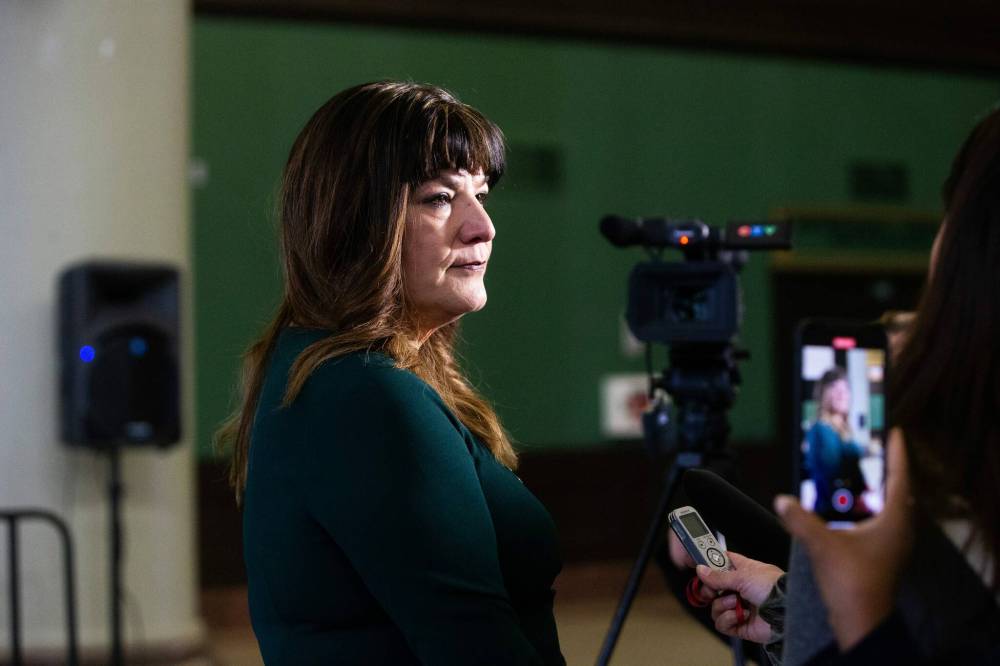
Smith isn’t ready to provide details on exactly how the budgeted $2 million will be spent over the next year. But she says there will be more consultations and more information will be released in the coming months.
Smith has prioritized discussions with people who have lived experience using illegal substances, as well as others working on the front lines of Winnipeg’s toxic drug crisis, including: Shared Health, Rapid Access to Addictions Medicine clinics, the Aboriginal Health and Wellness Centre of Winnipeg, Sunshine House, the Winnipeg Police Service and Winnipeg Fire Paramedic Service.
The minister has travelled to see how facilities operate elsewhere but says, “We want a made-in-Manitoba model.”
What that means isn’t clear at this point, but Smith says she wants to ensure people visiting the site will be offered connections to primary health-care services, housing supports and employment and income assistance.
The model will be a “continuum of care,” helping people access recovery, she says.
“That’s a part of the consulting — to make sure that if those services are needed, that the right folks are at those tables,” Smith says, adding the facility will be located downtown, where the need is greatest.
Kinew said recently that the province is also considering a submitted proposal from front-line organizations requesting an Indigenous-led safe consumption site directed by the Aboriginal Health and Wellness Centre.
The earliest a facility could be up and running is next year, he said.
Meanwhile, Smith says the government recognizes there is a range of “concerns and opinions” surrounding supervised consumption sites, but she is hoping people also understand the positive impacts.
Opponents frequently argue that supervised consumption sites lead to an increase in crime. Experts who study substance-use disorder and harm-reduction policies say the evidence suggests that isn’t the case.
In fact, the opposite is often true, says Mary Clare Kennedy, a research scientist with the BC Centre on Substance Use.
While critics raise concerns about a so-called “honeypot effect” — where the facilities attract more people who use drugs, leading to an increase in crime — decades of studies, both in Canada and internationally, show the sites “do not increase community crime rates and actually results in fewer people using drugs in public spaces,” Kennedy tells the Free Press.
And distance from a site is often a barrier; the people visiting a location tend to be those who are already living in the area, she says, adding the benefits of supervised sites are well-documented: they reduce overdose deaths and harms associated with substance use; reduce spread of HIV and hepatitis C (both infections can be spread by sharing needles or other equipment used to prepare and inject drugs); support access to addiction treatment and health services; and improve public order and community safety.
“Even though we have a lot of good scientific evidence showing supervised consumption sites are effective, we sadly still see opposition,” she says. “A lot of this stems from stigma and misunderstanding.”
Manitoba is in the midst of a toxic drug crisis. Preliminary data released by the Office of the Chief Medical Examiner shows there were 445 drug-related deaths last year, down slightly from 467 in 2022, but up from 432 in 2021.
In Winnipeg, newly released numbers suggest emergency calls for people who consumed opioids are now surpassing those involving alcohol. In previous years, monthly data shows there were consistently hundreds more calls for alcohol than any other substance.
Statistics show the Winnipeg Fire Paramedic Service responded to 323 opioid-related calls, compared to 296 for alcohol in November, and 401 involving opioids and 342 for alcohol in December.
The number of times first responders administered naloxone — which reverses an opioid overdose — also increased dramatically in 2023, up by 50 per cent from the previous year. City data shows naloxone was administered by firefighters or paramedics to 3,124 people in 2023, compared to 2,054 in 2022, 1,904 in 2021 and 1,579 in 2020.
Additionally, HIV rates in Manitoba are closely tied to injection drug use. A 2022 provincial report shows injection drug use was the most common primary risk exposure for 84 per cent of all females with new HIV diagnoses and 55 per cent of all males.
Harm-reduction advocates who have long called on the provincial government to create a supervised consumption site to address overdoses of toxic street drugs are grateful the NDP has stuck to its campaign commitment, even if it means waiting another year.
MIKE DEAL / FREE PRESS FILES Kim Bailey, director of prevention, testing and wellness at Nine Circles Community Health Centre in West Broadway.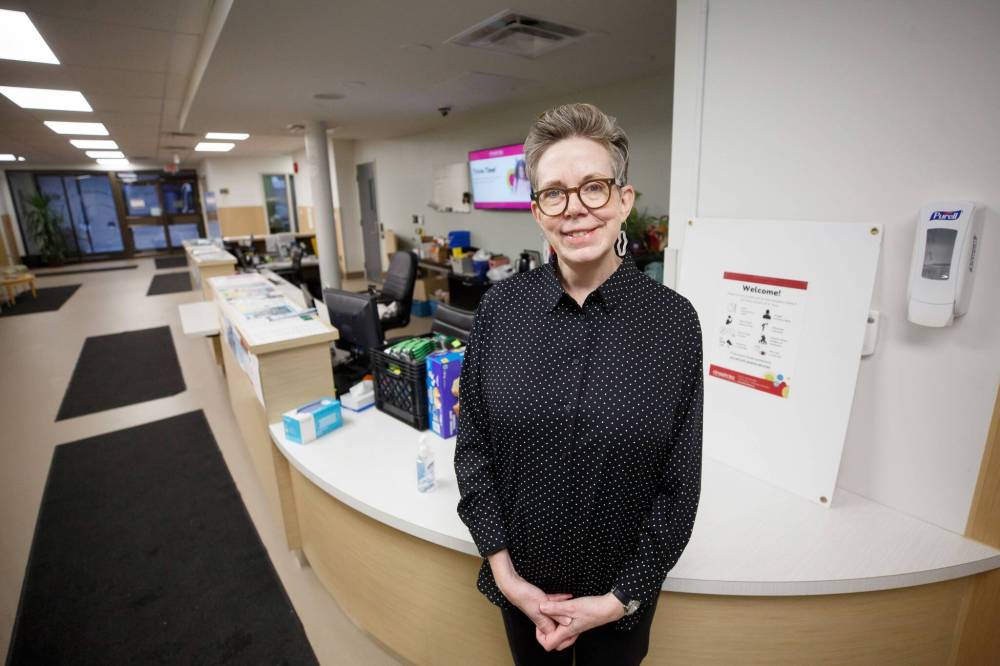
Kim Bailey, for one, understands it may take time for the broader community to get on board.
“There’s a perception of crime and danger because of all the stigma attached to people who are using substances,” says Bailey, director of prevention, testing and wellness at Nine Circles Community Health Centre in West Broadway.
“If people don’t feel safe, it’s also something that needs to be addressed — even if it’s not true.”
But she also recognizes that evidence doesn’t always change people’s minds. It will take work to build trust within the community where the site is located, she says.
As supervised sites are a response to community needs, they can help make life safer in nearby neighbourhoods and for the people who use them, she says, adding the province should establish more than one facility in Winnipeg.
“This is a great start but I hope it’s not the end,” she says.
Some worry one or more supervised facilities aren’t sufficient to help everyone who uses drugs, including those who do so recreationally.
Joseph Fourre’s 31-year-old son Harlan died last year after taking a drug tainted with fentanyl. Fourre says his son, a hard-working roofer and member of Norway House First Nation with five siblings, wasn’t an addict.
Supplied Joseph Fourre (left) says one bad decision cost his son Harlan (right) his life. The younger Fourre died after taking a recreational drug tainted with fentanyl.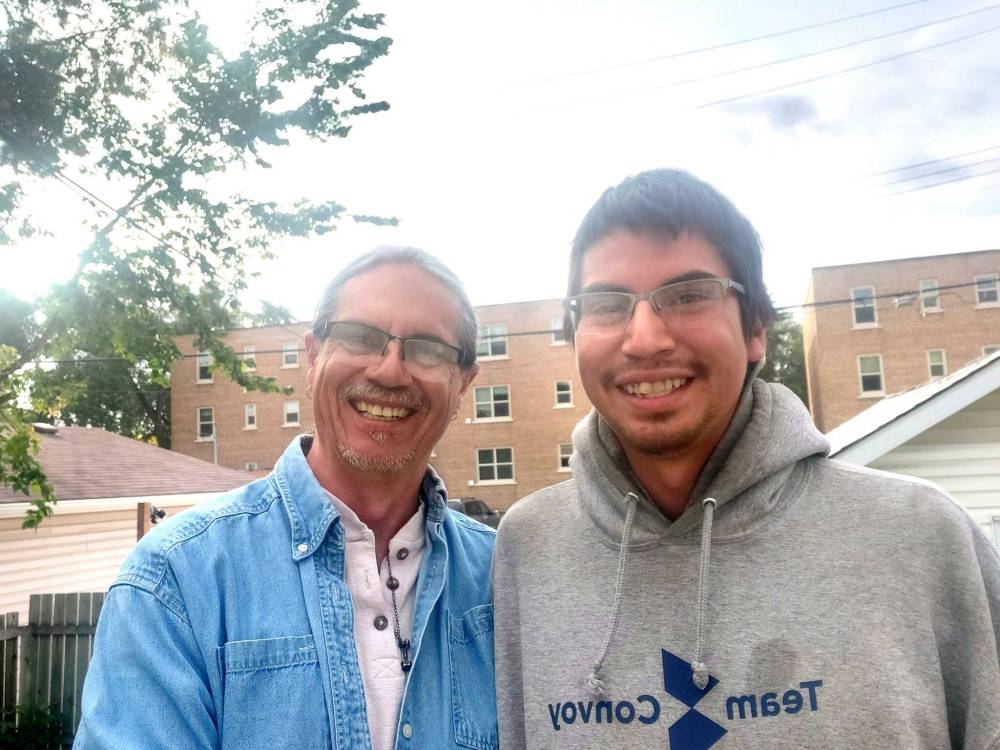
Fourre created the Singing Red Bear Foundation in his son’s honour to raise awareness of the danger of recreational drug use.
Fourre is disappointed with the province’s focus on supervised consumption sites in the budget. He wants commitment to a program to make people aware of the dangers of drugs contaminated with deadly substances such as fentanyl, which is 100 times more powerful than morphine and 50 times more powerful than heroin.
“We need to send the message that no one is safe from any kind of drug use, recreational or otherwise, and this budget failed to do that,” Fourre said in a statement.
Arlene Last-Kolb, a member of Moms Stop the Harm, a group of women who’ve lost children to drugs, takes a different approach. Her son Jessie, 24, died of fentanyl poisoning in 2014. She would like to see Manitoba focus on safer supply, providing pharmaceutical-grade drugs to people who use substances, giving them an alternative to the potentially toxic illegal supply.
“Why would people buy drugs from a drug dealer if they could get something safe?” she says.
Street drugs should be regulated in the same way alcohol is so people know what they’re getting and don’t accidentally overdose as her son did, Last-Kolb says.
In a shocking case in Toronto last summer, an innocent bystander was killed by a stray bullet near a supervised consumption facility. The woman, 44-year-old Karolina Huebner-Makurat, was a mother of two out for a walk. A worker at the site was later charged with accessory after the fact and obstructing justice in the shooting.
Ontario’s Progressive Conservative government launched a “critical incident review” of consumption and treatment services sites. The South Riverdale Community Health Centre, which runs the site, responded by holding community town hall meetings. It also directed a multi-stakeholder “safer community committee” to create a report after receiving feedback from neighbours.
The final report included 27 recommendations to “address substance use and mental-health issues, crime and community impacts.”
The report “makes it clear that the two priorities of delivering public health and achieving public safety are inseparable,” Emily Hill, chair of the health centre’s board of directors, said in a statement.
Prairie Harm Reduction’s supervised consumption site in Saskatoon has been successfully operating for four years.
Just over 850 people accessed the site last year, Prairie Harm Reduction says. Some are there once a day, others multiple times. The organization’s data shows 91 visitors were referred to detox or treatment.
The data shows there were 42 overdoses at the site in the past year. All were revived by staff or paramedics who were hired to be on-site.
No one was rushed to a hospital. No one died.
katrina.clarke@freepress.mb.ca

Katrina Clarke
Investigative reporter
Katrina Clarke is an investigative reporter with the Winnipeg Free Press.
History
Updated on Friday, April 12, 2024 7:52 PM CDT: Adds HIV information
Updated on Monday, April 15, 2024 3:03 PM CDT: Corrects name 'Prairie Harm' to 'Prairie Harm Reduction' in story

